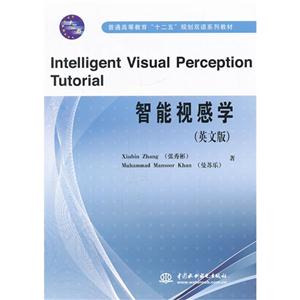-
>
闯进数学世界――探秘历史名题
-
>
中医基础理论
-
>
当代中国政府与政治(新编21世纪公共管理系列教材)
-
>
高校军事课教程
-
>
思想道德与法治(2021年版)
-
>
毛泽东思想和中国特色社会主义理论体系概论(2021年版)
-
>
中医内科学·全国中医药行业高等教育“十四五”规划教材
基于数据挖掘技术的新农村建设调查分析
¥19.3¥29.0复杂系统基于gent的建模与仿真
¥16.6¥46.0基于支持向量机的煤矿安全建模研究及应用
¥19.0¥25.0基于数据的复杂工业过程监测
¥15.6¥43.0
智能视感学-英文版 版权信息
- ISBN:9787517000907
- 条形码:9787517000907 ; 978-7-5170-0090-7
- 装帧:一般胶版纸
- 册数:暂无
- 重量:暂无
- 所属分类:>>
智能视感学-英文版 本书特色
《智能视感学(英文版)》作者张秀彬、曼苏乐根据自己和博士、硕士生们的研究成果,结合多年从事本科生及研究生的教学经验与体会整理出这本教材,将其定名为《智能视感学》。考虑到目前在该学科方向上尚缺乏较为浅显易懂、又能形成体系的简明教程,作者想做一次尝试,希望能用一种较为通俗和深入浅出的方法来阐述智能视感的一些深奥知识,对初学者能够起到入门和建立继续深造的起点之作用。 这是一本基于图像信息的非接触式传感理论的技术书。教材中所阐述的内容涉及到图像识别、视差原理、计算几何原理、计算机图像图形学,乃至人类对自然界认识的诸多先验知识如何与视感检测相结合的方法和技术问题。因此,本书是一本多学科交叉的较为前沿的大学研究型教材。
智能视感学-英文版 内容简介
本书从计算机视感及其信号处理的基本概念与基础理论出发,阐述了基于图像信息的识别、理解与检测技术原理与方法。本书根据作者多年来从事智能视感理论与技术研究成果,结合研究性本科与研究生教学特点编撰而成。全书分为基础篇与应用篇两大部分,其中,基础篇系统地介绍了智能视感的基本原理、方法、关键技术及其算法;应用篇则由配合主要基础理论和方法的应用技术实例所组成。全书遵循理论知识与实用技术的紧密结合、数学方法与实用效果的相互映证等编写原则。本书可以作为检测与控制、自动化、计算机、机器人及人工智能等专业的高年级本科生和研究生的教材,也可作为专业技术人员的参考工具书。
智能视感学-英文版 目录
- >
龙榆生:词曲概论/大家小书
龙榆生:词曲概论/大家小书
¥8.7¥24.0 - >
上帝之肋:男人的真实旅程
上帝之肋:男人的真实旅程
¥20.2¥35.0 - >
苦雨斋序跋文-周作人自编集
苦雨斋序跋文-周作人自编集
¥6.1¥16.0 - >
朝闻道
朝闻道
¥14.8¥23.8 - >
名家带你读鲁迅:故事新编
名家带你读鲁迅:故事新编
¥13.0¥26.0 - >
月亮虎
月亮虎
¥15.4¥48.0 - >
烟与镜
烟与镜
¥18.3¥48.0 - >
姑妈的宝刀
姑妈的宝刀
¥15.7¥30.0
-
UG NX 10.0模具设计教程
¥38.2¥59 -
计算机组成原理(微课版)
¥45¥69.8 -
电路基础/于宝琦
¥31.9¥49 -
通信电源
¥23.9¥38.8 -
计算机操作系统-(第四版)
¥19¥53 -
科学技术概论
¥30.4¥49
统计学原理(第二版)
¥35.8¥49.0汽车前沿技术科普系列--图说电动汽车无线充电技术
¥46.4¥69.8非平衡态相变热力学(中册)
¥167.3¥239.019春五年中考三年模拟7年级历史下
¥18.5¥31.8工程电磁场数值分析与优化设计
¥28.9¥59.0


















